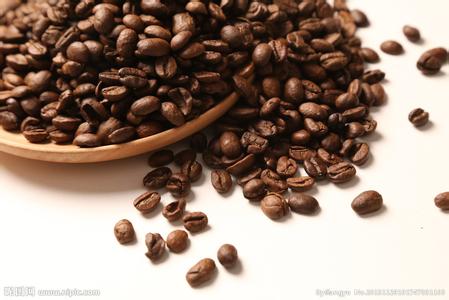Description of characteristics and Flavor of Panamanian Coffee introduction of varieties produced by grinding scale by taste treatment
Description of characteristics and Flavor of Panamanian Coffee introduction of varieties produced by grinding scale by taste treatment
Panama has been among the world's best coffee producers since three years ago, surprising countries that have been in the vanguard of developer production for many years. Panamanian coffee is mainly produced in the west near the Costa Rican border, producing the best washed coffee. Compared with coffee beans grown at low and middle elevations, the low temperature and stable climate at high elevations in Panama are more beneficial to the growth of coffee beans. The coffee beans grown here grow slowly, have the strongest and special flavor, and the hardness of the coffee is the hardest.
"Panamanian coffee beans | how about Panamanian coffee beans, Mr. Wen? Panamanian coffee is divided into small batches and classified w.kaf.name. "
Coffee beans at high altitude have the most complete taste, high mellowness and diversified flavor, such as chocolate, caramel, flower and so on. The entrance is warm and moist with moderate sour and bitterness. The Panamanian extremely high growth bean is one of the most outstanding varieties.
The BOQUETE region of Panama, located in the province of CHIRIQUI on the border with Costa Rica, is the home of Panama's famous GEISHA coffee and is famous for producing high-quality Arabica coffee. The Tedman & McIntyre (TEDMAN&MACINTYRE ESTATE) estate, located in the mountain area of Poggett 4000 feet above sea level, comes from the two earliest coffee families in Panama, the Tedman family and the McIntyre family. In 1925, Canadian fruit merchant Alexander McIntyre (ALEXANDER DUNCAN MACINTYRE), infected by his brother Joseph, came to Poggett to settle down, married ANGELA ROSAS in the same year, bought an estate named "LA CAROLINA" and began to grow coffee. Their descendants still own the estate and become one of the most famous coffee farms in the area.
Planting environment
Panama is a small country located in the center of the American continent. The waters of the Atlantic and Pacific oceans flood its beaches.
Panama is located at 9 degrees north latitude, the meeting point of the Central Mountains, where Mount Baru, one of the highest volcanoes in Central America, is located.
The Baru volcano has an altitude of more than 11400 feet, and the land around it is rich in nutritious and fertile soil, providing sufficient conditions for the sowing and cultivation of coffee endemic to Panama.
The appropriate microclimate, soil, temperature and height of these highlands are suitable for sowing, planting and harvesting a variety of unique coffees. These coffees have jasmine, citrus, ripe fruit, berries, caramel, special sweetness, vanilla, chocolate and other flavors.
Unique coffee
Panamanian coffee is classified and numbered into small batches, which are designed to have a small capacity for optimal management, and classification numbers allow buyers to understand and track the entire process.
Because of its small quantity, Panamanian coffee products are based on special coffee. The country provides its high-quality products to specialized stores around the world, such as Denmark, Britain, Greece, Norway, Sweden, South Korea, Japan, Taiwan Province of China and the United States.

Important Notice :
前街咖啡 FrontStreet Coffee has moved to new addredd:
FrontStreet Coffee Address: 315,Donghua East Road,GuangZhou
Tel:020 38364473
- Prev

Introduction of varieties of grinding scale by taste treatment method for flavor description of Sidamo Shakiso coffee bean production area
Sidamo Shakiso Coffee Bean Flavor description Taste treatment Grinding Calibration Variety introduction Coffee beans in Ethiopia are classified according to the proportion of defective beans. Indonesian beans are mainly divided into six grades, namely G1~G6. Ethiopia also uses this method, with the highest grades of washed beans G1 and G2, and the highest grades of sun-dried beans G1 and G3 (Shakisso/Shakiso) located in the west.
- Next

Flavor description of Organic Coffee beans grown in Alpine catimor of Yunnan Province
Flavor description of Yunnan catimor Alpine Organic Coffee beans Taste treatment production areas introduce two classic high-quality coffee varieties, Typica and Bourbon, which are the main varieties of coffee in Yunnan, and the Katimo Catimor series were introduced from Kenya in 1991 (stronger anti-virus ability and higher yield). The variation of Arabian species (also known as small-grained species)
Related
- Detailed explanation of Jadeite planting Land in Panamanian Jadeite Manor introduction to the grading system of Jadeite competitive bidding, Red bid, Green bid and Rose Summer
- Story of Coffee planting in Brenka region of Costa Rica Stonehenge Manor anaerobic heavy honey treatment of flavor mouth
- What's on the barrel of Blue Mountain Coffee beans?
- Can American coffee also pull flowers? How to use hot American style to pull out a good-looking pattern?
- Can you make a cold extract with coffee beans? What is the right proportion for cold-extracted coffee formula?
- Indonesian PWN Gold Mandrine Coffee Origin Features Flavor How to Chong? Mandolin coffee is American.
- A brief introduction to the flavor characteristics of Brazilian yellow bourbon coffee beans
- What is the effect of different water quality on the flavor of cold-extracted coffee? What kind of water is best for brewing coffee?
- Why do you think of Rose Summer whenever you mention Panamanian coffee?
- Introduction to the characteristics of authentic blue mountain coffee bean producing areas? What is the CIB Coffee Authority in Jamaica?

